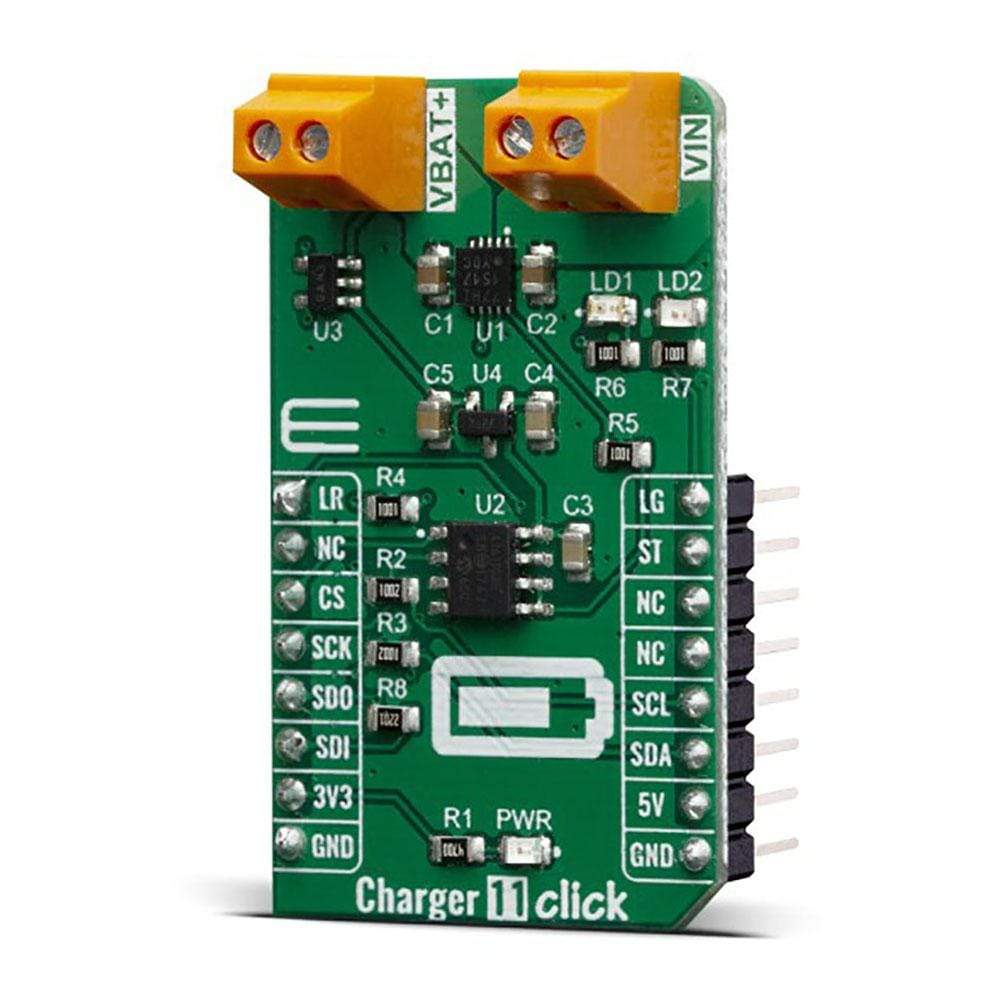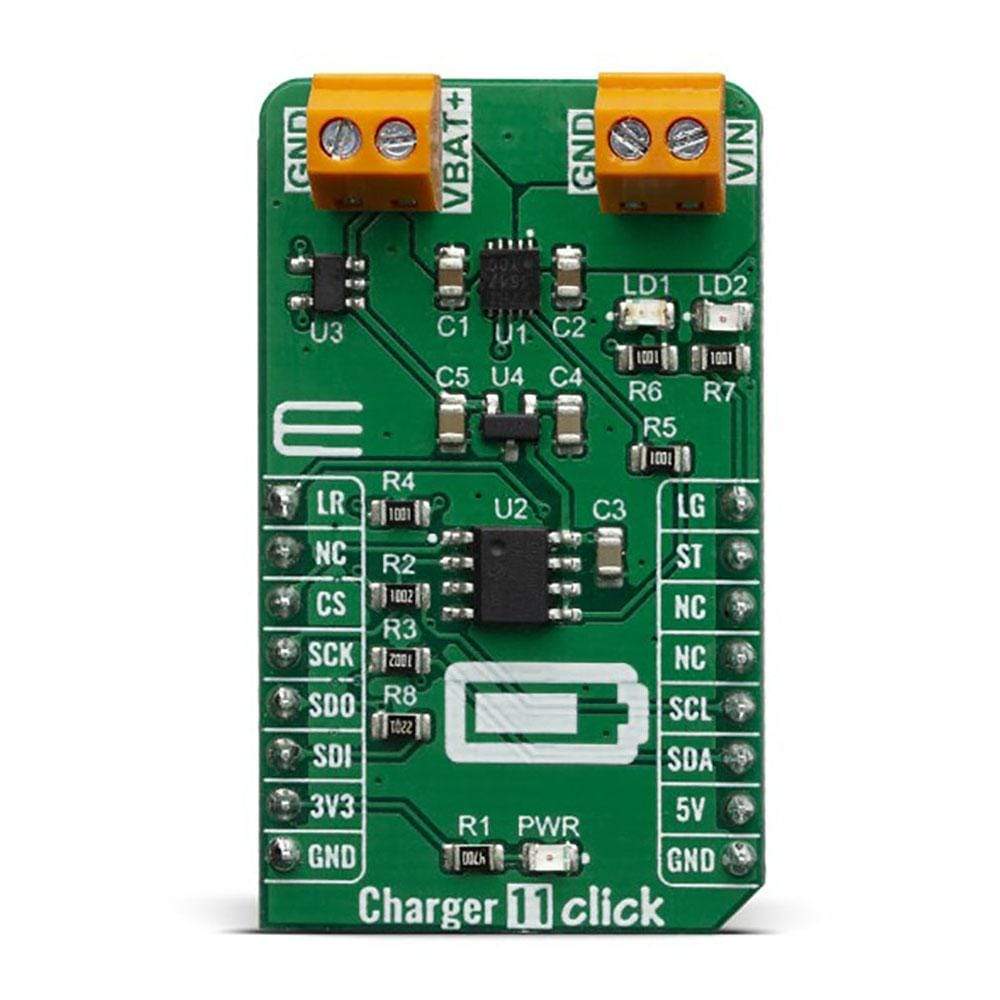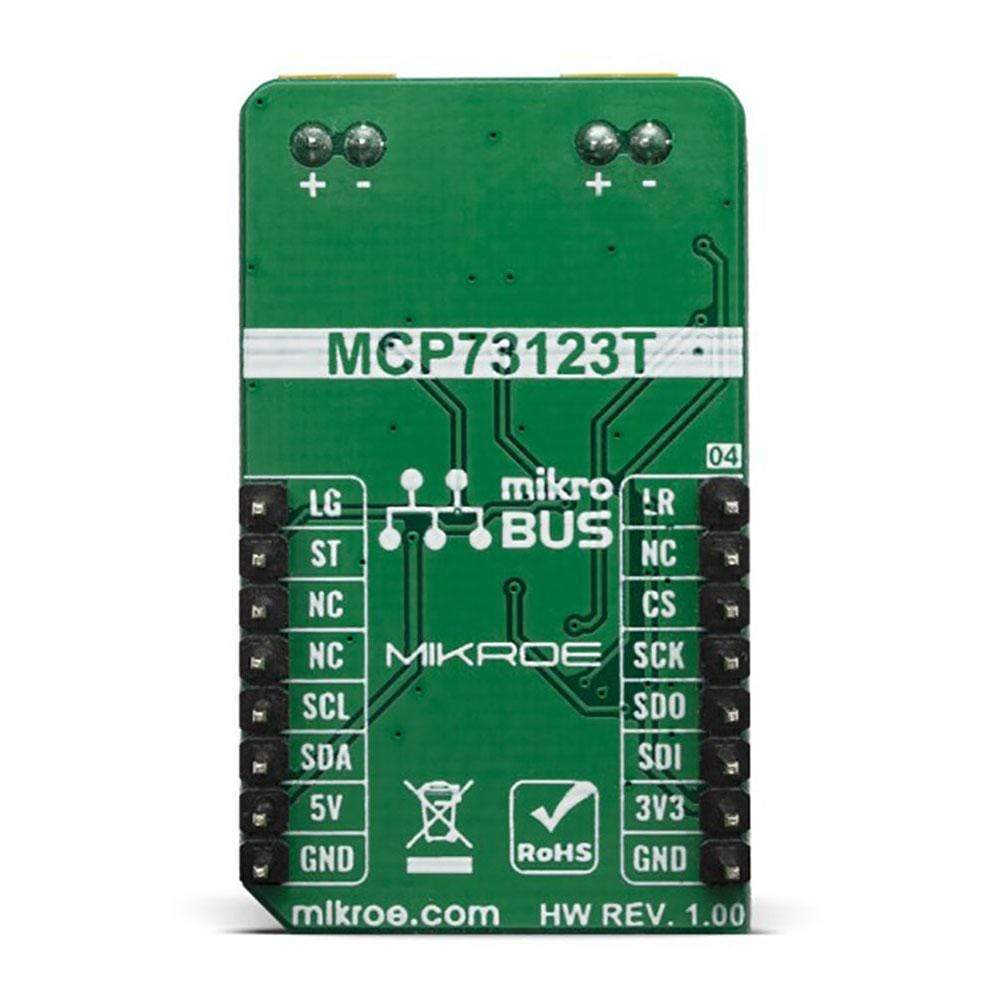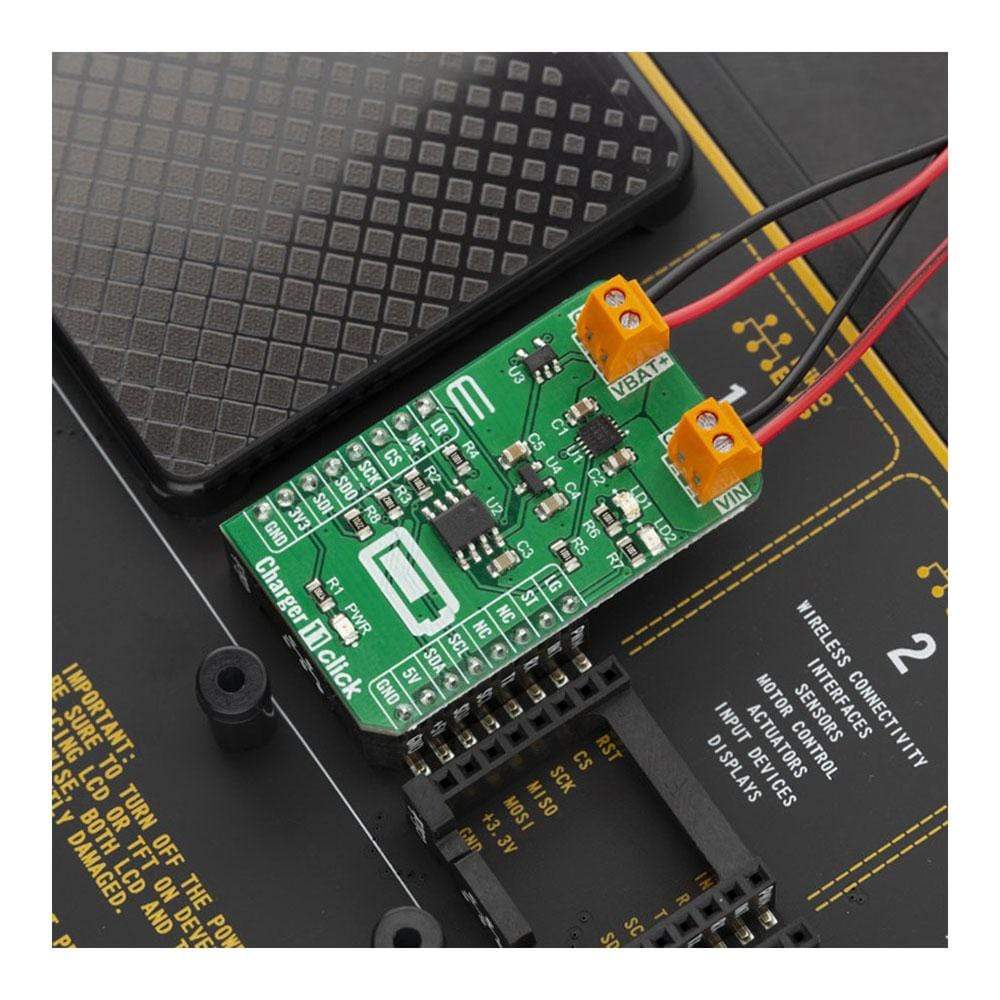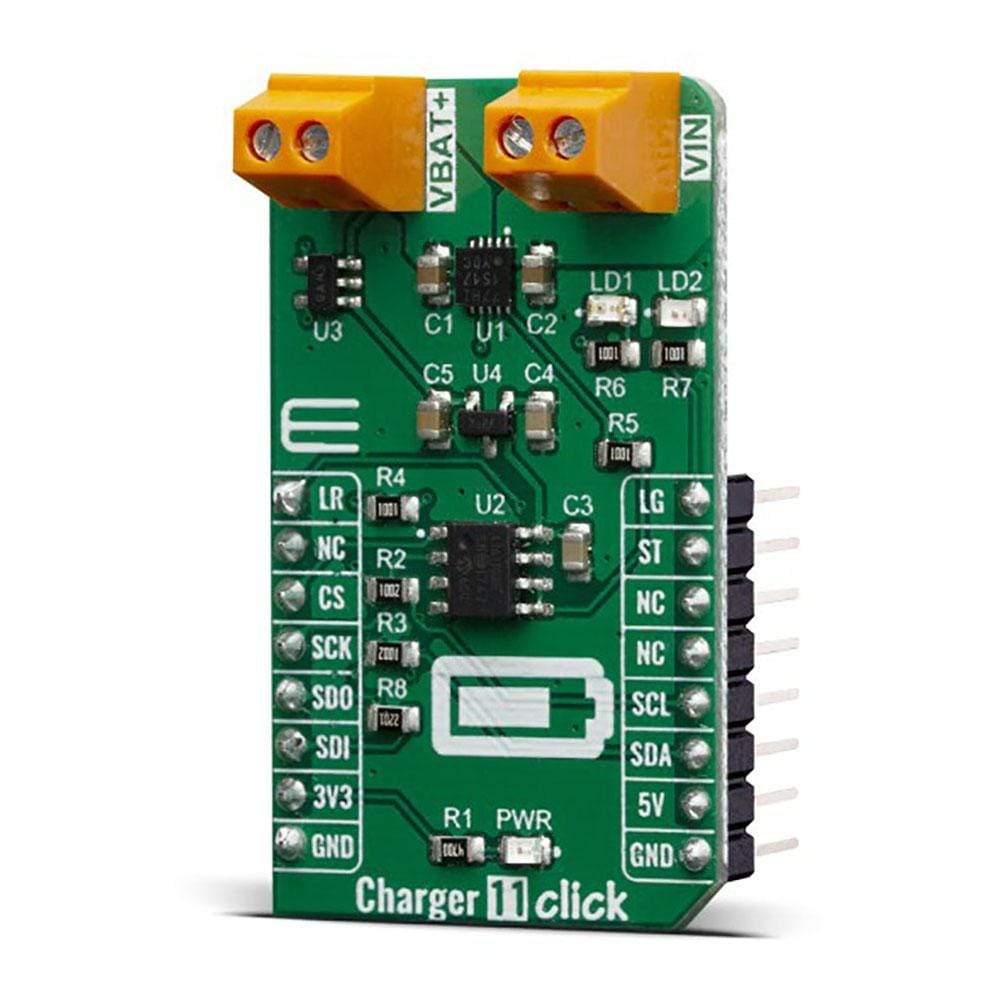
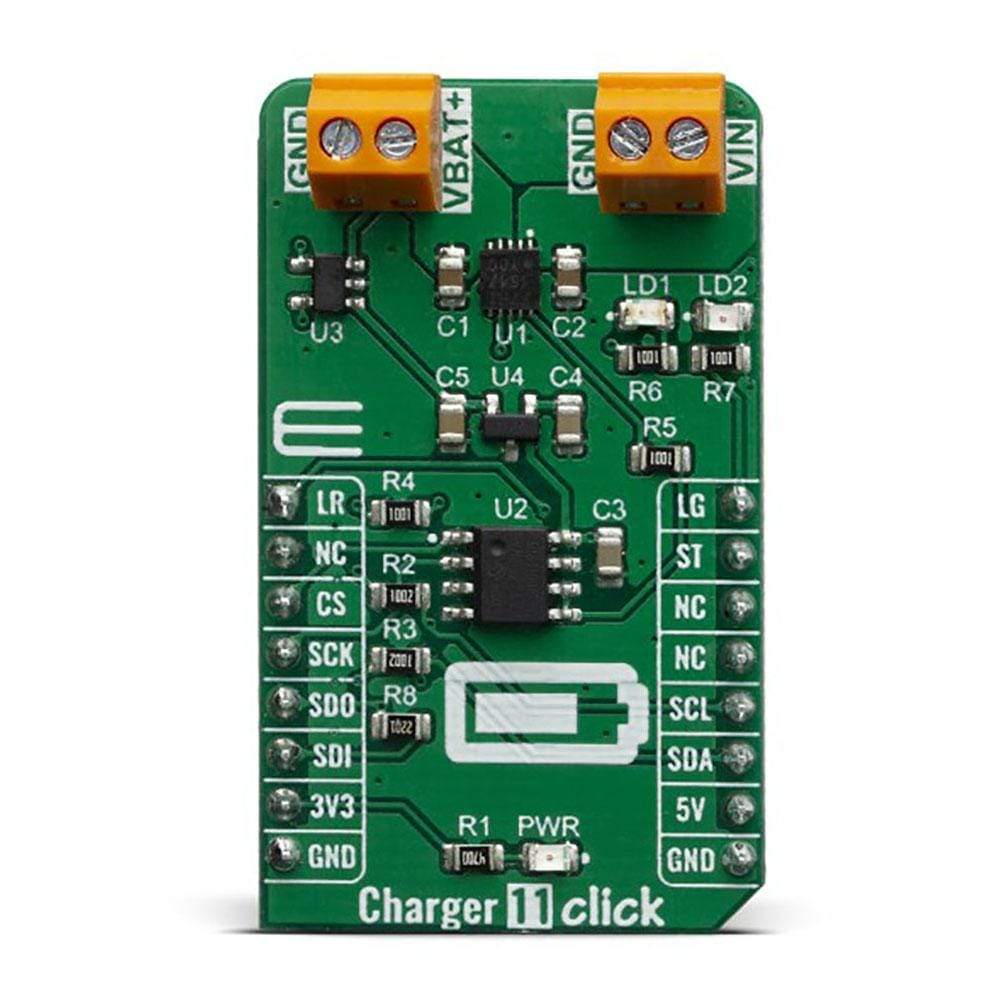
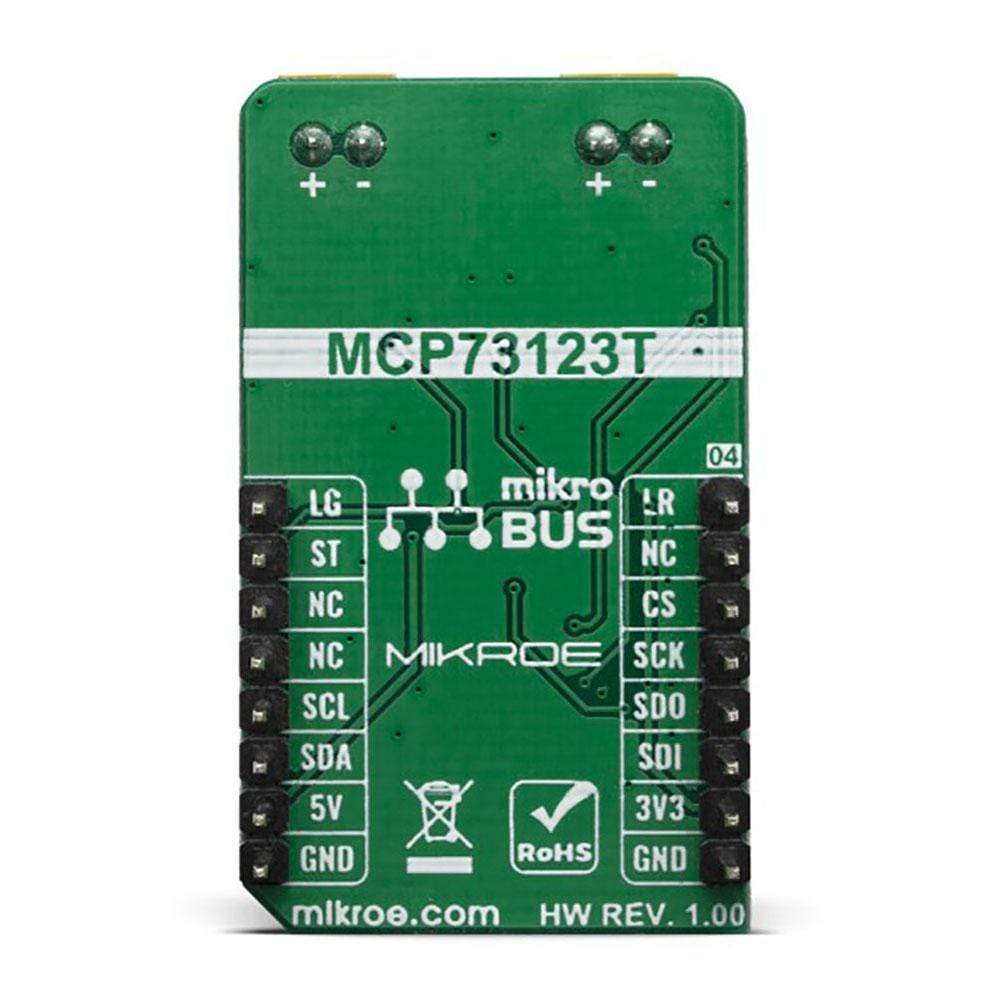
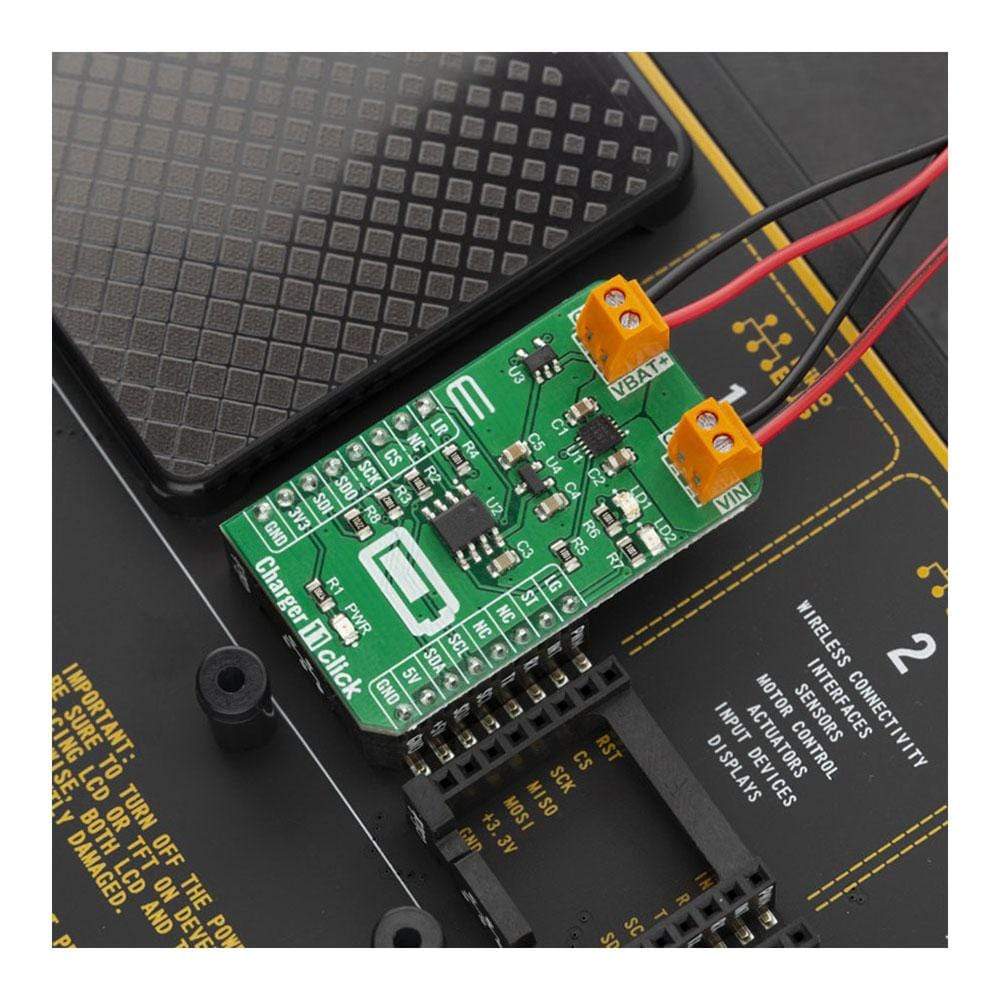
Overview
The Charger 11 Click Board™ is a LiFePO4 (lithium iron phosphate) battery charger. This Click Board™ can be used for Low-Cost LiFePO4 battery chargers, or Power Tools, toys, backup energy storage solutions, etc. The Charger 11 Click Board™ is based on the MCP73123T controller which has some extra features enabling charging without too much hassle.
The Charger 11 Click Board™ features charge current control which uses an SPI interface through MCP4161 IC, which is an 8-bit digital potentiometer. For battery voltage monitoring this Click Board™ board uses MCP3221A5T analogue to digital converter through the I2C interface. On the board, there is a Power LED and two extra LED’s which can be used for charging indications.
Downloads
Das Charger 11 Click Board™ ist ein LiFePO4-Akkuladegerät (Lithium-Eisenphosphat). Dieses Click Board™ kann für kostengünstige LiFePO4-Akkuladegeräte oder Elektrowerkzeuge, Spielzeuge, Backup-Energiespeicherlösungen usw. verwendet werden. Das Charger 11 Click Board™ basiert auf dem MCP73123T-Controller, der über einige zusätzliche Funktionen verfügt, die ein Laden ohne allzu großen Aufwand ermöglichen.
Das Charger 11 Click Board™ verfügt über eine Ladestromregelung, die eine SPI-Schnittstelle über MCP4161 IC verwendet, ein 8-Bit-Digitalpotentiometer. Zur Überwachung der Batteriespannung verwendet diese Click Board™-Platine den Analog-Digital-Wandler MCP3221A5T über die I2C-Schnittstelle. Auf der Platine befinden sich eine Power-LED und zwei zusätzliche LEDs, die für Ladeanzeigen verwendet werden können.
| General Information | |
|---|---|
Part Number (SKU) |
MIKROE-3650
|
Manufacturer |
|
| Physical and Mechanical | |
Weight |
0.021 kg
|
| Other | |
Country of Origin |
|
HS Code Customs Tariff code
|
|
EAN |
8606018716371
|
Warranty |
|
Frequently Asked Questions
Have a Question?
Be the first to ask a question about this.

